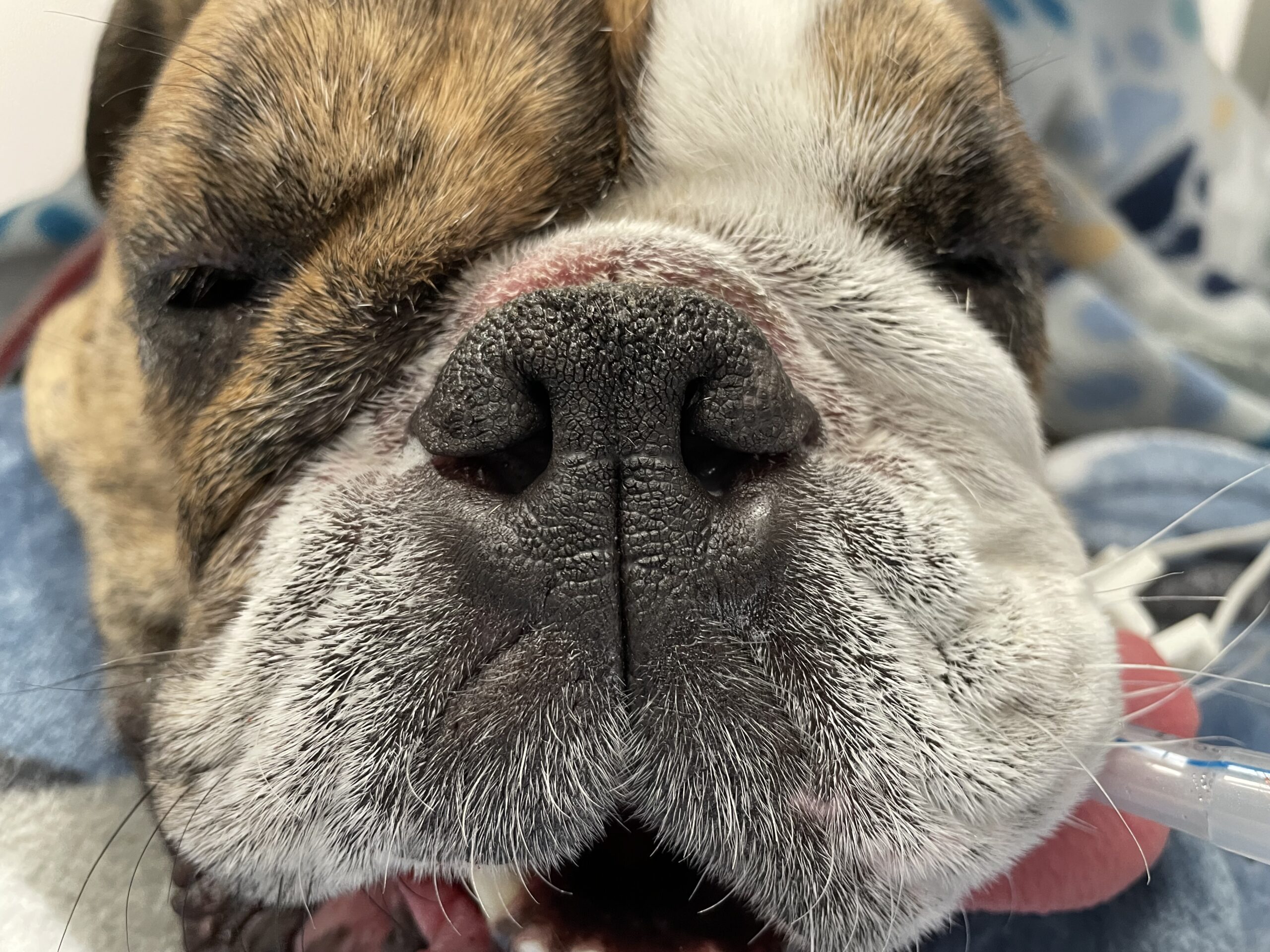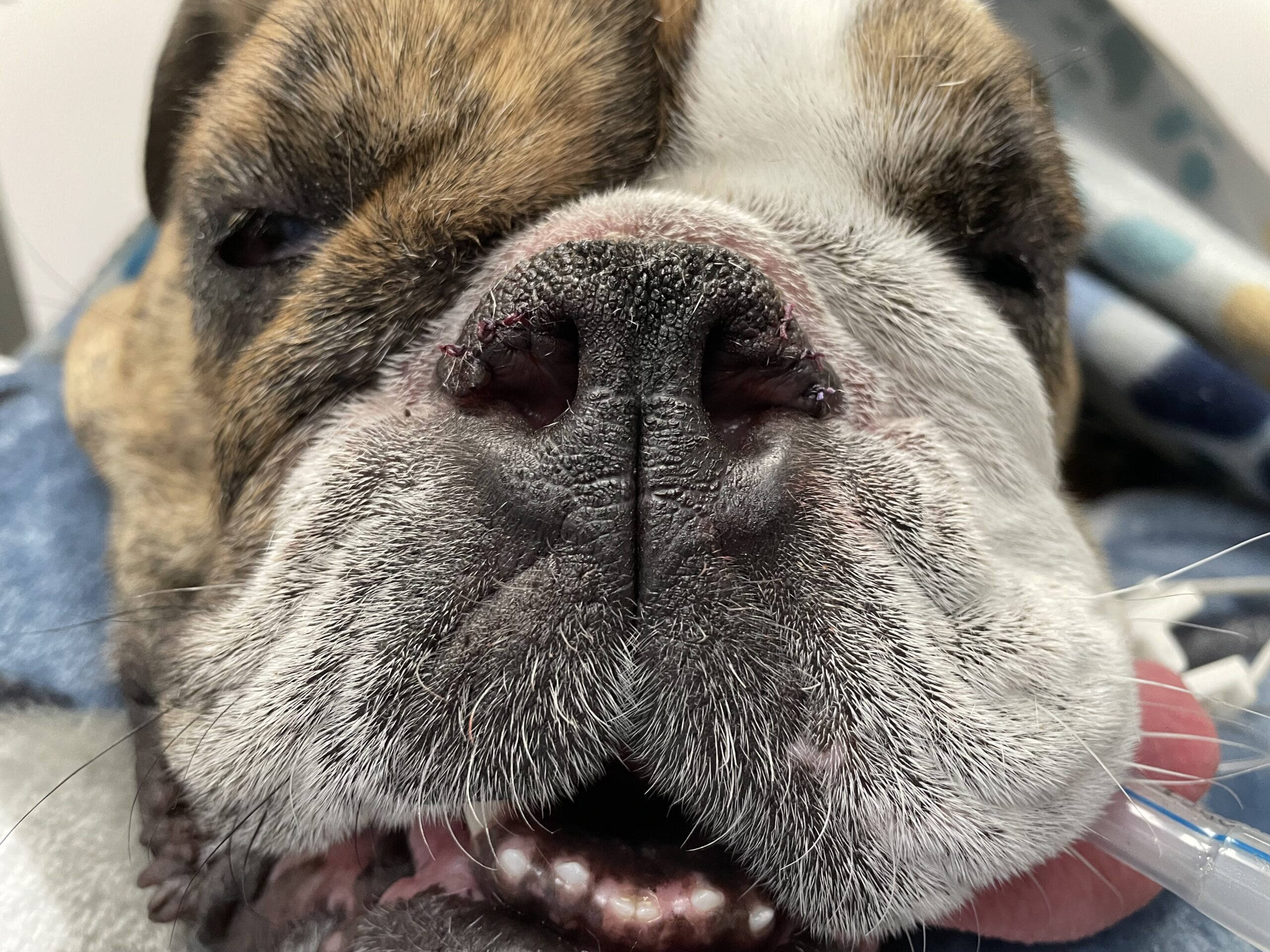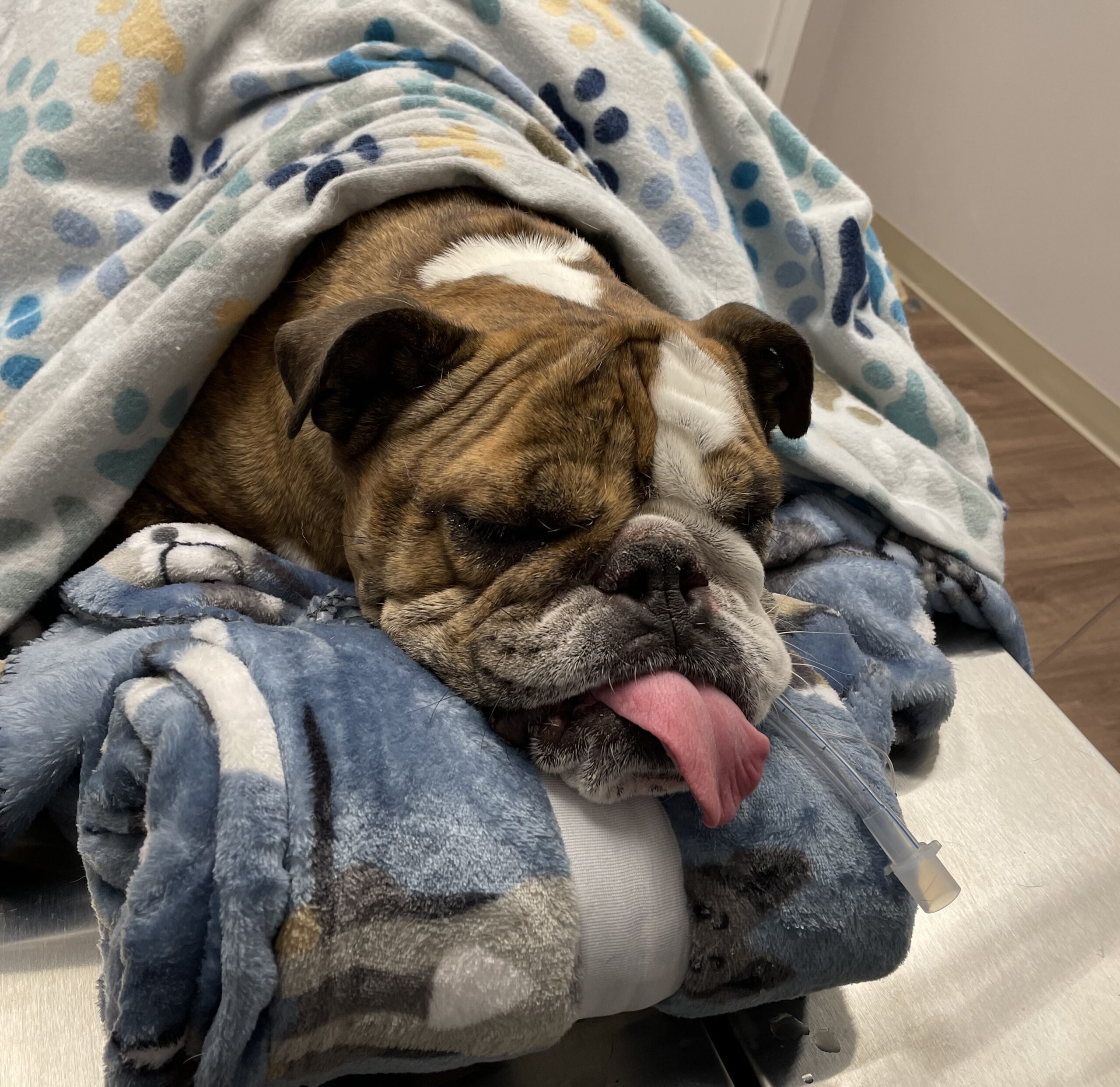Molly, a 4 year old Bulldog, was struggling to breathe by day and snoring loudly at night.
Her owner writes: “Molly has essentially snored since we got her at 3 months. Before she was spayed, she was evaluated “somewhere else” and we were told things didn’t look so bad, so no need for extra surgery. When we got her brother, who is MUCH more active than she, we were lucky enough to be referred to Dr Zeltzman when he was neutered, and saw he did quite well.”
In addition, Dr. Zeltzman had already done surgery on Molly. She had a TPLO surgery (and so did her brother!) to treat an ACL tear and now she runs like a puppy! I would trust him to do surgery on me at this point!”
Like most “brachycephalic” dogs with a flat face (Bulldogs, pugs, Boston terriers etc), Molly suffered from a condition called brachycephalic syndrome.
Such dogs have the same amount of “soft tissue” inside a much shorter nose, so the tissue is much thicker than normal, and blocks the airway.
Everything starts in puppies, who classically have tiny nostrils (“stenotic nares”).
This reduces the amount of oxygen going in, and of CO2 going out.
So the puppy struggles to breathe.
The more they suffocate, the more swelling occurs in the throat, which only makes things worse.
One consequences of this swelling is that the soft palate (i. e. the very back of the roof of the mouth) becomes longer and longer. It elongates. This is called an elongated soft palate.
When the dog breathes, the elongated soft palate vibrates, which causes snoring – sometimes incredibly loud.
The next consequence has to do with 2 fleshy masses in the larynx (aka voice box), called the saccules. They are normally not visible. Over time, as the dog suffocates, the saccules can pop out into the airway – and further block the flow of oxygen.
The only definitive treatment is surgery, which entails 2 or 3 steps.
1. Nose job
Molly had relatively small nostrils, which were widened with a rhinoplasty (“nose job”).
This how her nostrils looked before surgery:

And this how her nostrils looked after surgery:

We used 3 stitches on each nostril. They dissolve on their own, so they don’t need to be removed.
2. Soft palate surgery:
Since Molly’s soft palate was too long, it was shortened.
This is called a soft palate resection.
I do not have a video of Molly, so below are 2 videos about the removal of a very long soft palate in a French Bulldog.
PLEASE BEWARE.
The video could be considered graphic by some sensitive readers, so please be warned.
In this first video – preop – you can see that the surgical instrument grabs the tip of the soft palate and move it in and out of the airway.
In the second video – postop – you can see that the tip of the soft palate barely touches the other tissue, which is the way it’s supposed to be.
3. Saccule surgery:
Lastly, Molly’s saccules did pop out. They were “everted.” So they were cut out since they don’t really do much for a living…
Molly recovered smoothly after anesthesia. Here she is, enjoying having a tube down her throat, which allowed to breathe better than ever!

A few weeks after surgery, Molly’s owner simply writes: “After 4 years (of struggling to breathe by day and snoring loudly at night), Molly is doing great! NO MORE SNORING!!”
Molly’s story is a great reminder of a few very stubborn myths among owners of brachycephalic dogs, ie dogs with a flat face:
. Snoring is NOT normal
. Struggling to breathe is NOT normal
. Not being able to catch their breath is NOT normal
. Suffocating is NOT normal
. Being unable to run and play with other dogs is NOT normal.
Surgery can greatly improve these dogs’ quality of life.
If you would like to learn how we can help your pet with safe surgery and anesthesia, please contact us through www.LRVSS.com
Never miss a blog by subscribing here: www.LRVSS.com/blog
Phil Zeltzman, DVM, DACVS, CVJ, Fear Free Certified
